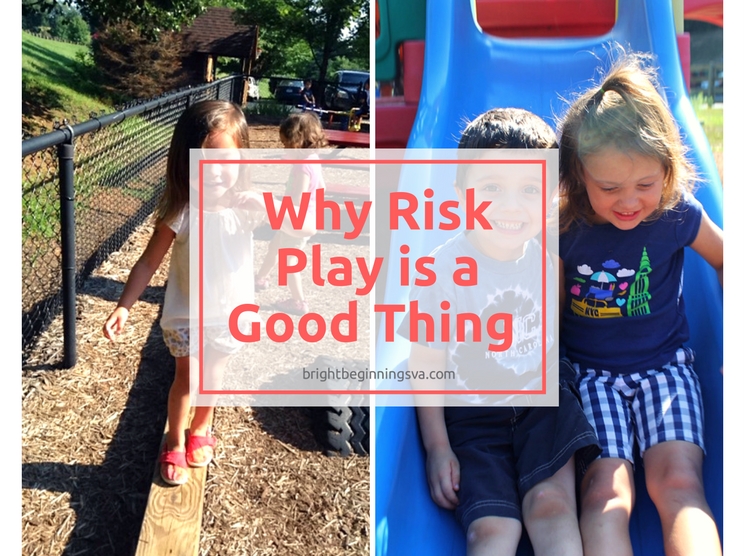Why Risk Play is a Good Thing

Risk Play is an interesting subject for parents and teachers since anytime parents and caregivers hear the word “risk”, we tend to have a strong emotional reaction. One one hand, why in the world would we as adults put any child at risk? Isn't it our job to protect, no matter what? It is in our nature as parents and caregivers to minimize falls and bumps as much as possible? On the other hand, isn't it a part of growing up? However, if our end game goal is to teach children to make good decisions and support them when they fall short, we must consider the concept of Risk versus Hazard, at least in regards to playing and learning outdoors.
Think back to your childhood and all the fun things you did outdoors as a child. I'd be willing to bet that quite a lot of it was done without the kind of supervision we provide for our children today. Now we laugh and say "well, we turned out alright", which is true. So what's the problem with allowing our children to experience a little risk? Absolutely nothing if handled well and in the case of a group child care setting, if staff training and supervision is strong.
We've spent a lot of time researching and training our teachers about this concept and the related research that supports providing reasonable risk as an appropriate element for our children’s play time outside. Our teachers have received Risk versus Hazard training and know to look at an activity through that lens.
The core concept is distinguishing between risk and hazard. In this context, a hazard is defined as something that clearly places a child's safety at risk such as broken glass or a faulty swing or insufficient protective clothing for an activity. Hazards are elements banned from our school because the possibility of injury is just too great or elements that need to be immediately corrected like a rusty bolt on a piece of playground equipment. Hazards are eliminated by ensuring that play structures are the appropriate size to prevent high falls or that picnic tables are sanded thoroughly to prevent splinters and children riding trikes have fitted helmets. A risk is defined as having the potential to harm but unlikely if the activity and developmental stage of the child are appropriate. For instance, climbing a tree with low, well placed branches could be a risk for a child if he doesn't have the upper body or core strength to move from branch to branch. We wouldn't present a tree to climb to a two year old. Or, walking on top of logs is a risk which requires the child to use Executive Functioning and plan how to maneuver along the log. A child just learning to climb upon and walk along a log will likely start where he's comfortable perhaps scooting along the log on all fours, then trying to move along it bent close to the log to catch himself. Eventually his confidence and physical skills will allow him to jump up on the log and walk carefully, keeping his balance. No worry, when he falls off because he knows how to land with bent legs or fall safely. A child learns this naturally. And what if the risk results in the child sliding off the log and perhaps getting a scrape or injury? The potential for great injury is low and the child likely will jump up and try again. Because, guess what? It's fun to challenge ourselves to learn new things, especially outdoors! But the child has no inherent high risk unless the log is unstable or covered with poison ivy for example, which makes the log a hazard, not a risk!
Excellent quality preschools have goals that provide challenging outdoor activities so preschoolers can try new things that may seem a little scary and hard at first. Of course as teachers and parents, we can guide them at first by modeling safety, holding their hands and boosting their confidence and cheering them!
We ask our teachers:
- What kind of risks are reasonable?
- Have you thoroughly scanned your space for potential hazards and are clear about what risks your students can handle?
- What rules can be broken?
And why not allow our children to have some of the the same amazing opportunities that we had growing up!
Benefits of risk play:
- Increase in self-esteem
- Depth perception
- Overall sense of independence
- Reasoning skills



